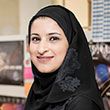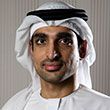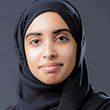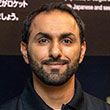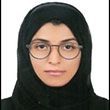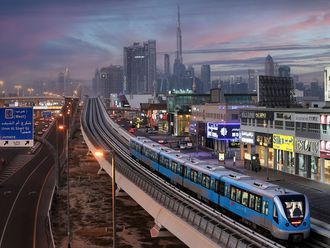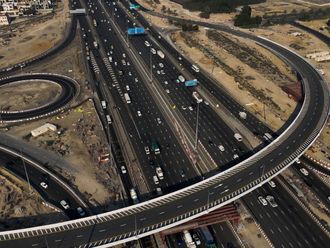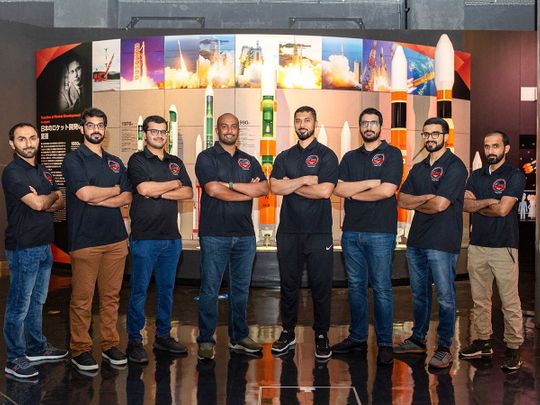
Dubai: Six years of perseverance and technological innovation will come to fruition as the UAE’s Hope Probe, the first Arab interplanetary mission, begins its journey to the Red Planet in the early hours of July 20.
Hope Probe (Al Amal in Arabic) will study the planet’s entire atmosphere and the UAE will become only the fifth country in the world to orbit Mars.
Over 200 Emirati engineers, scientists and analysts have collaborated on Hope Probe since it was first announced by His Highness Sheikh Mohammed bin Rashid Al Maktoum, Vice President and Prime Minister of the UAE and Ruler of Dubai, back in 2014.
Here, we look at some of the men and women – the faces of Hope – who helped build more than a spacecraft but also a “beacon of hope” for all the people of the region to revive a rich history of Arab and Islamic achievements in science.
They have answered the call to build an Emirati space program and helped forge a promising future for humanity from the desert sands of the UAE to Mars and beyond.
Sarah bint Yousif Al Amiri - President of the UAE Space Agency
Minister of State for Advanced Sciences and Science Lead of the Emirates Mars Mission. Sarah was recently appointed as the president of the UAE Space Agency. Earlier she was appointed as Minister of State for Advanced Sciences in October 2017. Her responsibilities include enhancing the contributions of advanced sciences to the development of UAE and its economy.
She is also the Science Lead at Emirates Mars Mission, where she leads the team developing and fulfilling the Mission’s scientific objectives, goals, instrumentation and analysis programmes.
She was previously head of the Advanced Aerial Systems Program at Mohammed Bin Rashid Space Centre, where she led the design and development of the UAE’s first unmanned aerial system (UAS). She was Programs Engineer on the DubaiSat-1 and DubaiSat-2 projects.
She was also the former head of research and development at the Emirates Institution for Advanced Science & Technology (EIAST), where she established its knowledge management, strategic research and product assurance functionalities
Sarah holds a Bachelor’s and a Master’s degree in Computer Engineering from the American University of Sharjah.
She said she has always been interested in aerospace engineering, In November 2017, she became the first Emirati to speak at an international TED event in Louisiana, USA, where she spoke about the Hope Mars Mission.
In a recent interview with international news channel, Euronews, she shared her personal experience with Hope Probe: “For the last six years this has been our every waking, breathing moment. Even while sleeping, in the back of our heads we’re thinking of how to proceed forward, considering the constraints that we had on this mission with both time and budget. As you get closer to it, the emotions that you’re feeling - I can’t describe it. I don’t think I’ve ever personally been in the position where I’ve felt all these multitudes of feelings at such a high level. We’re all really looking forward to getting the spacecraft in the environment.”
Omran Sharaf - Emirates Mars Mission Project Manager
Omran graduated from the University of Virginia with a bachelor’s degree in Electrical Engineering in 2005 and earned his master’s degree in 2013 from Korea Advanced Institute of Science and Technology. His dissertation was “A Satellite for Knowledge Economy: Knowledge Transfer in the UAE Space Programme.
He was recruited as the first employee to join the newly established Emirates Institution for Advanced Science and Technology (EIAST) in 2006 working on the Command and Data Handling Subsystem of DubaiSat-1. On EIAST’s second EO mission, DubaiSat-2 Omran worked on the Systems Engineering in addition to the Command & Data Handling Subsystem.
His thoughts on Hope Probe: “The mission would send a powerful message to Arab youth that dreams of space exploration could be achieved…We are actually building the capacity and capability in advanced sciences in the UAE and the region. This is something important for everyone. It will help the region to have stability and a more competitive economy and integrate more with the global community.
Suhail Buti Al Mheiri - EMM Deputy Project Manager and Spacecraft Lead
Suhail leads the UAE team currently stationed at the Tanegashima Space Centre in Japan. He joined MBRSC soon after its foundation as the Emirates Institute for Advanced Sciences in 2006 as a Research Engineer in the Space System Development Department, working on the development of Payload Electronics of DubaiSat-1 and going on to become a Payload System and Electronics Design Engineer.
In 2013, he became the Space System Section Head, managing four engineering units: system engineering; mechanical manufacture; assembly and integration and electronics manufacture. These teams worked on the development of KhalifaSat. In 2014, he became EMM Deputy Project Manager and Spacecraft Lead, responsible for the spacecraft technical design and development as well as engineering teams. He obtained his Bachelor’s in Computer Engineering from the American University of Sharjah in 2006 and his Master’s in Aerospace Engineering (Space Systems) from the University of Daejeon in South Korea in 2013.
Talking about the mission, he said: “We are an integrated team of engineers within the inspection, integration and systems engineering team. As the deputy project manager, it is my responsibility to ensure that the launch vehicle is ready and all communications systems with the ground control are in place. We are working on the project with a unified team spirit and unlimited ambition and passion. The Hope Probe is a testimony to the capabilities of the UAE and the Arab world to accomplish mega projects and important scientific missions.”
Mariam Al Shamsi - Instrument Science Lead
Mariam will study the data and scientific information that will be collected by Hope Probe and made available to everyone via the Emirates Science Data Centre.
She said once the probe begins its mission to explore the Martian atmosphere, the data obtained will be compiled by the Emirates’ Scientific Data Centre and will be available to the international scientific community, “to help them understand the climate and the reasons why the Red Planet has lost part of its atmosphere”.
Hessa Al Matroushi - Science data and analysis lead
Hessa was part of the team that launched Nayif-1, the UAE’s first CubeSat. She was also the former Deputy Project Manager of Nayif-1 at MBRSC. She said: “I think one of the messages of this mission is hope, which is the name of the probe itself. If a small nation like us is able to achieve this kind of mission and get ourselves to Mars, then everything is possible.”
Omar Al Shehhi - Lead for integration and testing of Hope
Omar is one of the engineers who has been working on the mission since the start. He heads the assembly and integration unit at MBRSC, planning, evolving and conducting test procedures and plans for complex systems in spacecraft development. He previously worked as an Avionics engineer with Emirates Airline, and he holds a bachelor’s degree in engineering management from Dubai Men’s College, and a master’s degree in Engineering Management from Abu Dhabi University.
He said: “From the onset of the project, we began working on the designs of electrical and mechanical ground equipment, starting with planning tests on the satellite, and the environments that the Probe faces at different stages, such as the vibrations resulting from the launch environment, high and low thermal environment in space, and the assembly and installation of the probe in coordination with different teams.
Mohamed Al Ameri - Senior Space Mechanical Systems engineer
His main responsibilities range from design of spacecraft components structure to withstand the space environment with a focus on strength, stiffness, thermal stability, and manufacturability requirements. He is also the Spacecraft lead for the Arab Cooperation Satellite 813 (Hyperspectral Satellite). He has a bachelor’s degree from the University of Utah in the US, in Mechanical Engineering.
About his work for the mission, he said: “We meet every morning and share tasks according to a schedule. Each of us works on a set of tasks according to the diversity of responsibilities approach that we have trained on and which qualified us to deal with a wide range of tasks in different disciplines. “
Issa Hareb Al Mheiri - Energy Systems Engineer
Issa was responsible for installing the solar panels that will collect renewable and solar energy and power the batteries of Hope Probe.
He said: “The challenge lies in storing the solar energy when the Probe reaches and starts orbiting the Red Planet when the sun disappears at certain times. The importance of these batteries becomes vital then. I will also be tasked with ensuring that all the Probe’s batteries are fully charged before the launch date.”
Ahmad Obaid Al Yammahi - Assembly and Mechanical Systems Engineer
Ahmad provided support to the team during the shipping operation of the satellite. He was with the team at the Nagoya Airport in Japan to receive and transport the satellite and surround it with nitrogen gas to protect its stability and systems.
He shared: “I have utilized my installation and mechanical assembly experience that I gained from my previous work on the KhalifaSat project to support my colleagues today in the Hope Probe team and ensure best preparations.”
Mahmoud Al Awadi - Mechanical Systems Engineer
Mahmoud worked with the team that designed Hope’s structure. He also did the installation and assembly and conducted tests to ensure the safety of the probe and its scientific equipment.
He said of his task: “We ran many tests to ensure the safety and readiness of the fuel tank and make sure that there are no leaks in the propulsion systems network since we use hydrazine as a fuel for the probe, which is a very sensitive material.”
Youssef Al Shehhi - Thermal Systems Engineer
He was supposed to be at Tanegashima for no more than two weeks but due to the coronavirus pandemic, he decided to stay and support the team in receiving and moving the probe and testing the devices to ensure their safety and help install the thermal insulator that protects the probe from the space environment.
He said: “The project’s thermal systems are a challenge because the Probe will go through very hot temperatures at the launch to very cold temperatures when it reaches Mars. So, we designed the thermal systems and tested them under extremely low and high temperatures.”
Mohammad Omran Al Ameri - Ground Support Engineer
Mohammed joined the Probe Hope project in 2016 with a task to make sure that the probe’s systems are correctly integrated and assembled. He also helped design and make ground support equipment, such as the equipment that help integrate scientific devices on the probe to control its movement and direction accurately.
About his task, he shared: “We moved the probe after receiving it in Japan and installed mechanical equipment. We then measured its weight and central mass before and after refueling to make sure it’s ready. I also helped prepare the solar panels on the mechanical level and how they can be correctly folded in low and high temperatures since the probe will face both types of temperatures.”
Khalifa Al Mheiri - Satellite Telecommunications Engineer and Communication Subsystem Lead
Khalifa worked since 2016 within the Probe communications design group to ensure the integrity of communication throughout its journey from Earth to Mars.
His task is to receive all information from the Probe and send orders to it from the Earth station at MBRSC.
He said: “The frequency and the communication wave must be calculated precisely along with the electromagnetic radiations especially since the process of sending or receiving communication data with the Probe takes anywhere from 13 to 20 minutes due to the distance. We designed communications systems that make the data work within the correct frequency and at the correct speed to comply with the international standards approved by the International Telecommunication Union.”
He headed the communications unit of the space engineering department at MBRSC in 2018. He graduated from the American University of Sharjah with a Bachelor’s in Electrical Engineering.
Heyam Al Baloushi - Manufacturing, Assembly, Integration and Test (MAIT) and Quality Assurance Engineer
Heyam graduated from Khalifa University in 2011 and was one of eight female students to graduate from mechanical engineering department with honors. She received a research fellowship after graduation from NASA at the Ames Research Center in California where she worked for five months on the development and improvement of grey water filtration system used in space and earth applications.
She said: “The Hope Probe is more than its scientific goals; it’s a testament to the UAE’s readiness to tackle challenges and proves to be the ideal incubator for youth by inspiring them to follow their dreams. The Hope Probe project was developed by a group of diligent and enthusiastic Emiratis who achieved it in record time, and our wise government has provided opportunities to excel in all fields. It represents an Emirati contribution to benefit all humanity.”
Hope Probe expected to reach Mars’ orbit in February 2021 to coincide with the UAE’s celebrations of its golden jubilee.


